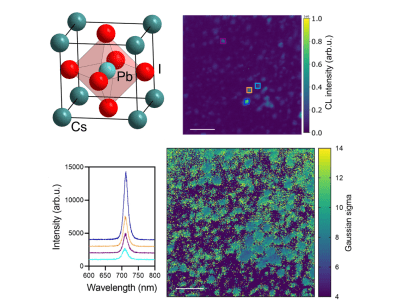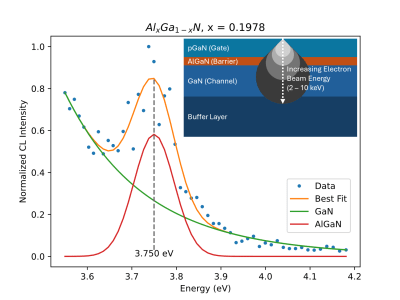Advancing Science with Precision Cathodoluminescence Principles


About Cathodoluminescence
Attolight’s technology leverages cathodoluminescence spectroscopy, a technique based on the phenomenon of cathodoluminescence (CL), where materials emit light when exposed to electron irradiation.
When integrated into a modern electron microscope (EM), CL becomes a powerful tool for fast, non-destructive defect inspection across full wafer scales. Although the phenomenon of cathodoluminescence has been understood for many years, its technical applications have historically been limited to manual laboratory setups.

Attolight is the only provider of fully integrated cathodoluminescence systems. We design, build, and optimize both electron and light optics to obtain high-efficiency CL collection while keeping our products simple to operate.
Attolight’s cathodoluminescence systems are designed for both R&D and industrial environments with outstanding performance that is achieved thanks to proprietary & patented optical designs.
Typical competing solutions consist of a light collection add-on that is mounted on a standard scanning electron microscope (SEM). This approach leads to sub-optimal performance in terms of reproducibility and light collection efficiency. Also, these systems need a dedicated operator who, in most cases, needs a solid scientific background in spectroscopy in order to use the system correctly. Finally, if the CL detection system is not performing up to specification, this could result from a problem in the SEM, the cathodoluminescence detection system, or from the detector alignment with the SEM. It can be difficult to know (a) whether alignment alone is the issue, and (b) if there is a system problem, and if so, which manufacturer to call in for a repair.
Quantitative Cathodoluminescence: Attolight’s hallmark
Attolight’s technology is based on cathodoluminescence spectroscopy. Cathodoluminescence (CL) is a well known phenomenon that refers to the light emitted by any material under electron irradiation.CL becomes a very powerful defect inspection method when implemented in a modern electron microscope (EM) that is capable of fast, non-destructive defect inspection on a full wafer scale. Although cathodoluminescence has been known for a long time, technical implementations have been limited to manual laboratory use.
This mode allows the measurement of minority carrier lifetimes and excited carrier diffusion distances. Conventional time-resolved cathodoluminescence systems use a beam blanker to “chop” the electron beam into short pulses.This approach however leads to a loss in spatial resolution and time-resolution can not reach the picosecond regime.
This is why Attolight uses a revolutionary technique to obtain short pulses: making use of the photoelectric effect by focalising a short laser pulse on the electron emitter to cause photoelectron emission.
By carefully synchronizing the ultrafast detector to the excitation laser, time-resolutions below 10ps can be achieved.

Gain deeper insights with our extensive technologies portfolio
Delve into advanced techniques such as Time-Resolved Cathodoluminescence (TRCL), g², and nanoprobing. Discover how these complementary methods enhance your material analysis capabilities.

Quantitative Cathodoluminescence

In-SEM photoluminescence
Find out how CL can help you with your research
Discover how our cutting-edge cathodoluminescence solutions are revolutionizing various industries.

Comprehensive defect review and classification for SiC

Correlating structural and optical properties of lead halide perovskites

Non-destructive control of epitaxial layer uniformity in GaN power devices
Our Cutting-Edge Equipment
Explore our high-resolution cathodoluminescence tools designed for superior materials characterization. From automated wafer CL SEM equipment to multi-spectroscopic CL SEM platforms and CL STEM add-ons, our tools offer unmatched precision and versatility for all your semiconductor inspection needs.




